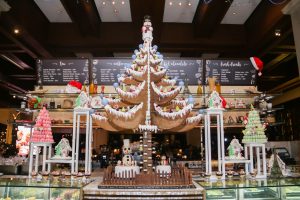Holy Week or Semana Santa in the Philippines starts from Palm Sunday up to Easter Sunday. Catholic priests and religious statues are garbed in purple to signify gloom. Catholics visit the church while Christians pray directly to God sans statues. Although their practices are different, they have a common belief, Jesus died on the cross to save mankind from sin.
About 80% of the Filipinos are Catholics, it comes as no surprise that people have a different interpretation of traditions to commemorate the Holy Week. Years back these traditions were meant to ask forgiveness for misdeeds, ask for favors such as a cure for ailments, and reflect on the life and sufferings of Jesus.
These Holy Week traditions evolved and has become more of a spectacle with less importance on its meaning.
Palaspas (Palm fronds)
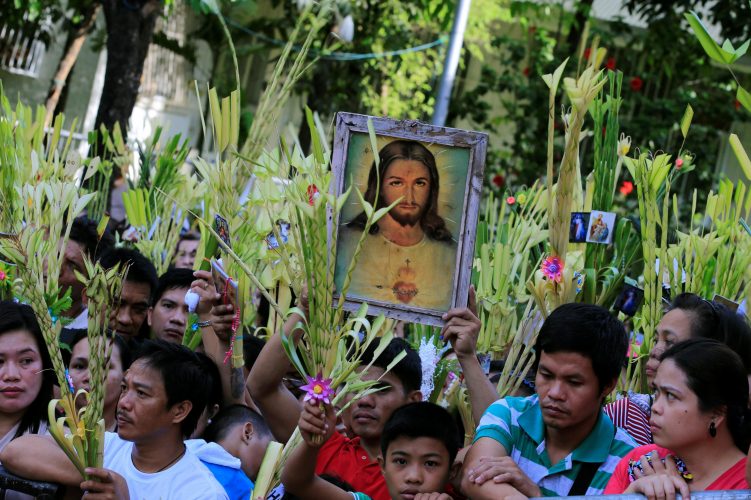
Credit: gmanetwork.com
A tradition observed by Catholics, they bring palaspas to church on Palm Sunday. This celebrates the triumphant arrival of Jesus in Jerusalem atop a donkey. The townspeople threw palm fronds as a sign of great respect. Palm leaves symbolize peace and victory and a donkey represents humility.
The churchgoers raise their palaspas into the air to be blessed by the priest during Mass. The blessed palm fronds are taken home and attached to doors, windowsill, and roofs. It is their belief that it will bring good fortune, drive away evil spirits, and remove any negativity in the household.
Fasting
Catholics fast during the Holy Week to help them remember the sacrifices that Jesus did to save man. It takes many forms the most popular is to abstain from eating meat this is replaced with seafood and vegetables. Other practices are avoiding vices, reducing hours of leisure, revelries and loud noises are avoided.
Most businesses are closed city dwellers migrate to the provinces and the highly busy districts are ghost towns. The programs aired on the TV and radio stations are mostly about Lenten specials and Jesus’s life.
Pabasa ng Pasyon
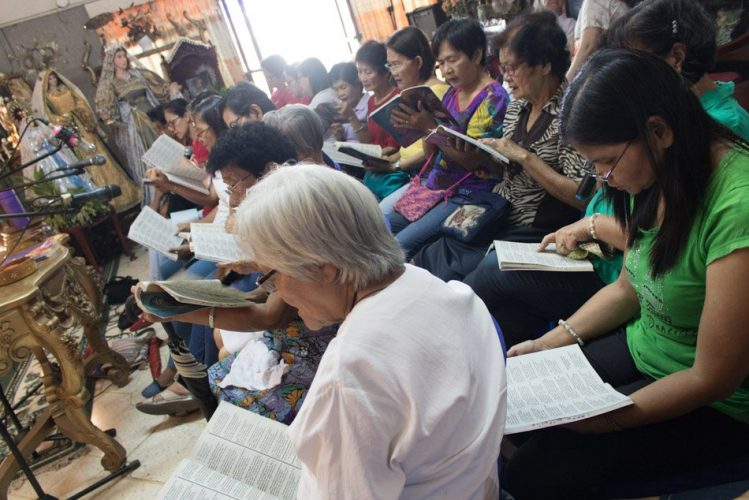
Credit: news.abs-cbn.com
Pabasa ng Pasyon or a reading, chanting about the Passions of Christ starts after the mass on Palm Sunday and ends on Maundy Thursday. There are two books for two groups of readers, a group chants a verse and the other group chants the next verse. The organizer usually installs a loudspeaker and provides a microphone to readers for the community to hear.
Penitensya
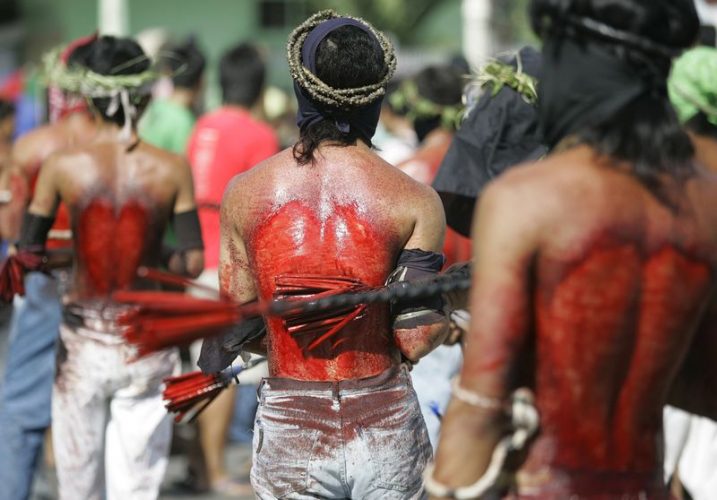
Credit: thepinoywarrior.com
Penitensya or penance is the practice of men and women, self-flagellants, seeking forgiveness for their sins hit their backs with a rope tied with bamboo strips at the end until blood flows in front of the public. They go around the different parts of the city some carry a cross through several churches while their companions lash their backs. Flagellants stop in front of the church or at houses with statues of Jesus and lie down on the sizzling concrete. Others go to the extent of nailing themselves to the cross.
Senakulo
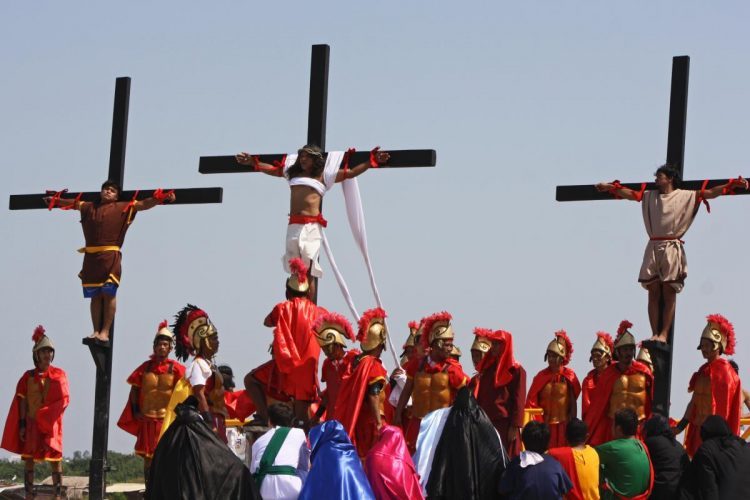
Credit: catholicsandcultures.org
The Senakulo is a play portraying Jesus Christ’s life suffering, crucifixion, and resurrection. Previously, it lasts for eight days from Palm Sunday to Easter Sunday, but the developed version run for about two hours. It is presented in different types of setting: a stage, on the streets, in the church, or the open space.
The characters are played by locals they are garbed in a Roman soldier’s uniform wearing their menacingly painted masks and others wear robes. The reenactment is through narration and role-playing by participants in a procession. A man carries a cross around the city’s streets and culminates with the nailing on the cross to affiliate with Jesus.
The century-old passion play is now fast-paced, richer in music, and lively. The enactment allows sightseers to take a look at what happened in the past and keeping it contemporary. Lately, the church is discouraging the staging of the Senakulo just for the sake of tourism.
Visita Iglesia
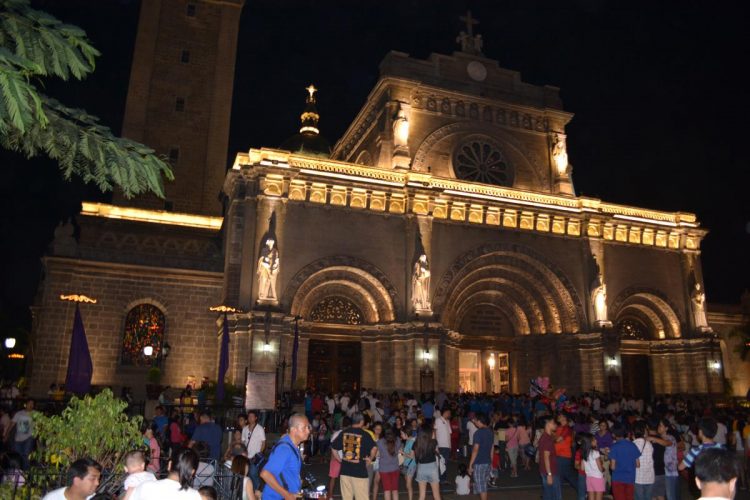
Credit to catholicsandcultures.org
Filipino Catholics’ sacred vow, panata, during the Holy Week is to visit at least seven different churches on Maundy Thursday and Good Friday before midnight. The choice of seven or fourteen connotes the Seven Last Words or the Holy Wounds of Jesus. Some visits 14 churches to match the 14 Stations of the Cross. Their belief is their prayers will be granted if they complete the 14 stations.
Siete Palabras
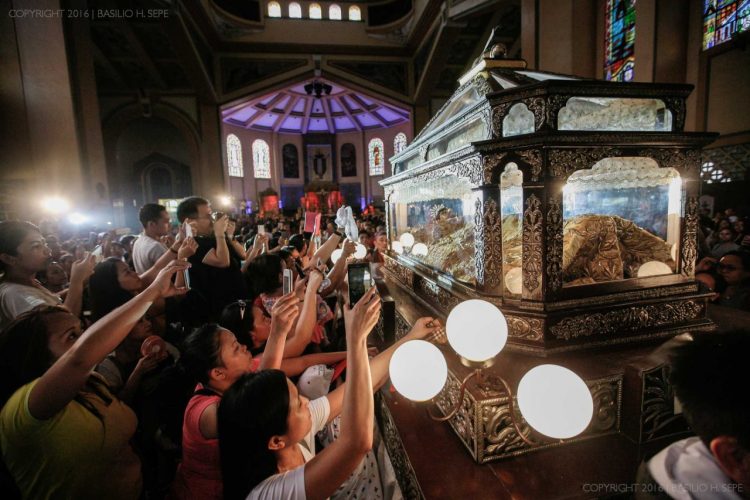
Credit: Basilio H. Sepe via basiliosepe.tumblr.com
Or the Seven Last Words of Jesus is the main activity on Good Friday, the readings start at 12:00 noon and wind up at 3:00 pm, the hour of Jesus’s death. This is followed by a procession of religious images all are veiled in black and carried around the city in carriages, carozas. The central figure is the body of the dead Jesus.
Salubong
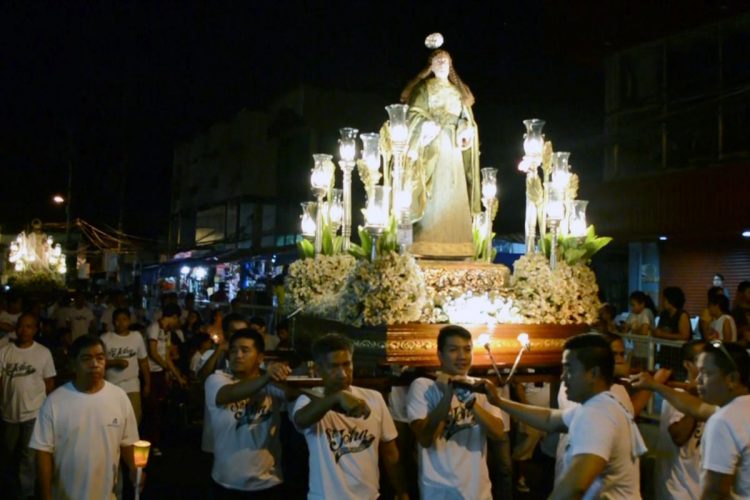
Credit: catholicsandcultures.org
Easter Sunday is celebrated with a salubong, the meeting of the Virgin Mary with Jesus who came back to life. Before dawn, a procession is held with two statues, Mary in a black veil and the risen Christ. When these images reach the stage in front of the church a young girl dressed in white is lowered to take away the black veil signifying an end to Mary’s sorrow and the resurrection of Jesus.
Sources:
https://www.asianjournal.com/life-style/observing-holy-week%e2%80%af/
https://www.philstar.com/the-freeman/cebu-lifestyle/2018/03/29/1801429/filipino-traditions-holy-week




